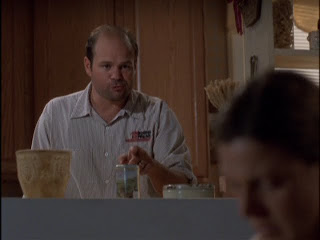
Written and Directed by Cary Fukanaga
The winner of the “Excellence in Directing” and ‘Cinematography’ awards at this year’s Sundance Film Festival, Sin Nombre intertwines the story of a Mexican gang member named Casper who doubts his allegiance to the gang with a teenage girl named Sayra who is trying to make it from Honduras to the U.S.A. We don’t know much about Casper beyond his membership in the gang, who are a tattooed bunch constantly at war with a rival gang. Casper is initiating a young new member who takes on the nickname Smiley while secretly breaking the gang’s strict rules about where to be and who to be with, dragging Smiley into the insubordination with him. Sayra is hesitantly setting off with her uncle and father, who was deported and separated from his new family in New Jersey and who is leading the way to sneak back into the States. Naturally, their journey takes them through the rail yards where Casper and Smiley hang out.
Casper is introduced to us sitting on his bed staring at a wall paper of vibrantly colored trees, immediately cluing us into his discontent with the gang life. Sayra is similarly introduced staring out into the densely populated city she lives in with her uncle. It is in this fashion that we know that both characters are connected by the fates. They are meant to eventually meet and fall in love against all odds, with dire consequences. This archetype of star crossed lovers works for and against the film at times. The downside is that the traditional plot points apply, making the film predictable. Once they are together, they will have unwavering dedication until an untimely end of some kind. The upside is that for the portion of the film that separates them, we are waiting to see what turns await to lead to their unity.
Each of the main roles is well handled under the direction of Cary Fukanaga. While the film’s title translates to “No Name”, I would say that he has made a name for himself with this film. I look forward to what he does next, because he shows a real ability for matching drama and character. Edgar Flores, as Casper, especially blooms under Fukanaga’s direction. With so little revealed about who Casper is and what his personal journey has been we still feel connected and understand his circumstances. The gang life depicted was heavily researched and it comes across on screen. Fukanaga lived with the actual gangsters fictionalized here to get their way of life just right. Apparently, they also gave notes on the slang used in the script to get it just right.
He also spent time with the train riding travelers trying to make their way north to get an accurate portrayal of their life on the rails. The shots of our protagonists riding atop trains as the natural world passes by are reminiscent of Days of Heaven, Terrence Malick’s Academy Award-winning film from 1978. While both have been rewarded in the category of cinematography, ‘Heaven’ is a landmark that Sin Nombre doesn’t quite live up to. The images are pretty, but not majestic. The camera placement is competent for telling the story but is neither dynamic nor especially naturalistic. One shot, however, stands out for placing us inside the head of Casper. In one scene he is knocked to the ground and the camera is sideways. The speed of film seems to change as Casper falls into frame and falls, hitting the floor. It is a rare close up in a film that keeps the camera far away during our protagonists’ most personal moments.
The film is something you see time and time again, especially around this time of year. Well made, well acted films that unfortunately don’t bring anything new to the table, story-wise. You can’t write them off because so much is right about them, and yet, the excitement that one seeks out from an excellent film is missing. It’s a shame this film isn’t on the shortlist for Best Foreign Language Film at the Oscars this year, because it is just the type of movie they typically go for.
***1/2 Three and a Half Stars – Take it or leave it
Sin Nombre is available now on DVD.

























